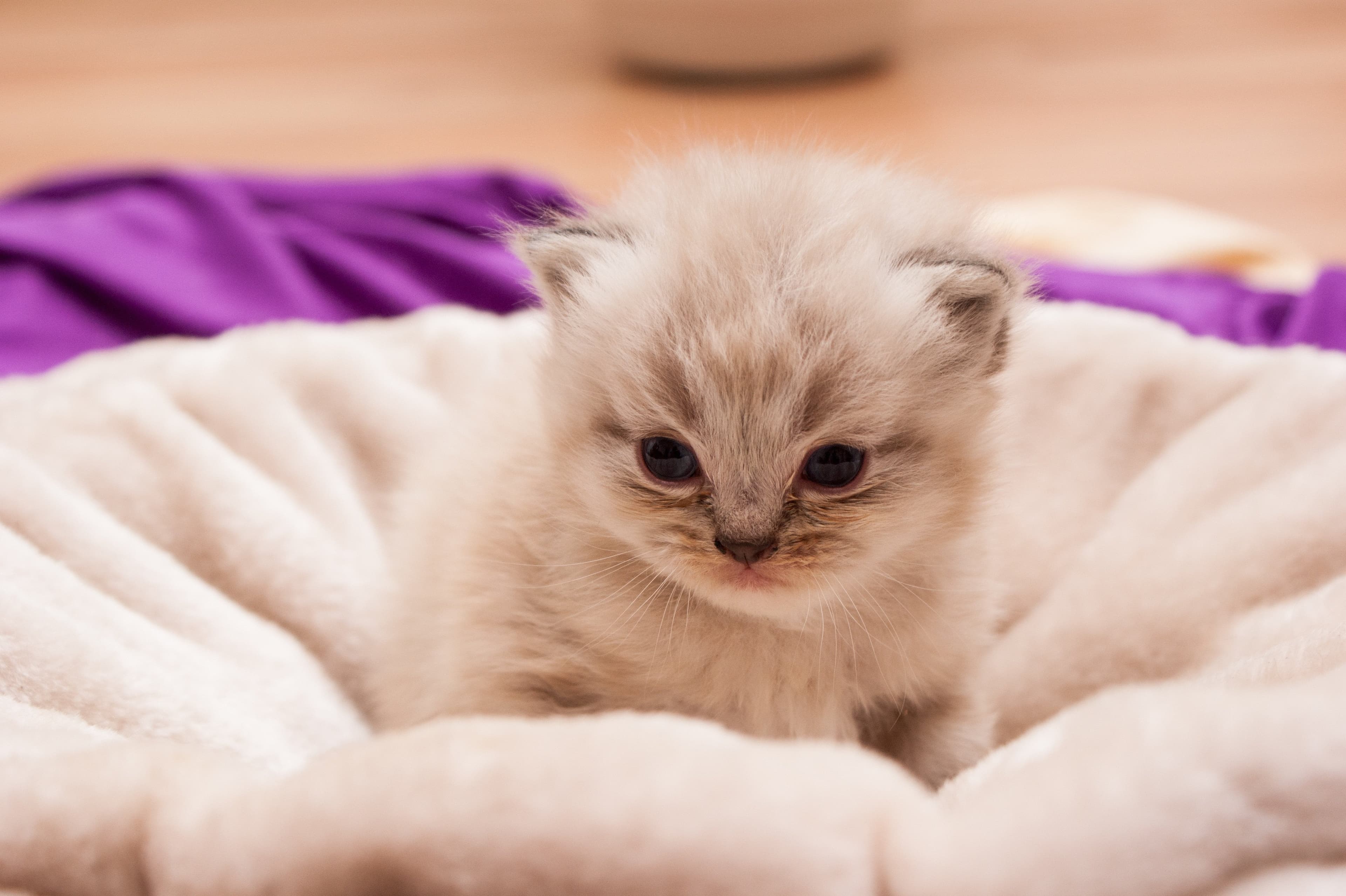This decreases the blood flow through the ventricle and increases heart rate (tachycardia). Many cats with HCM can live long and healthy lives, however, for some cats, HCM can be a devastating disease. Maine Coons and Ragdolls are thought to be at a higher risk from this genetic disease.
Background information
Hypertrophic cardiomyopathy (HCM) is a disease that affects the heart muscle (myocardium). HCM causes the left ventricle of the cat’s heart to thicken, which leads to the obstruction of the left ventricular outflow tract (LVOT). Because of this, a cat suffering from LVOT will have a reduced amount of blood being pumped through its body with each heartbeat compared to a healthy cat. In order to compensate, the heart of these kitties has to work faster, ultimately leading to increased heart rate (tachycardia).
An increased heart rate requires a higher supply of oxygen, which might outpace what your cat's lungs can supply. Without enough oxygen, the tissue in the cat’s heart muscle will begin to die. This can potentially lead to heart failure or fluid accumulation in the lungs (pulmonary edema/pleural effusion).

Genetics
The exact cause for HCM in cats remains unknown. Scientists have, however, found that feline hypertrophic cardiomyopathy can be inherited. The only identified gene related to HCM so far is MYBPC3, a gene that is essential for developing heart muscle. Two different mutations in this gene (A31P and R820W) have been found in Maine Coons (Meurs et al, 2005) and Ragdolls (Meurs et al, 2007), respectively. Homozygotes for the mutated genes have up to 18-times higher risk of developing complicated cases of HCM. There are tests available which screen for the A31P and R820W mutations, however, in most cases of HCM, the cause remains unclear.
Symptoms and diagnosis
Most common symptoms in the clinical presentation of HCM in cats are increased heart rate, heart murmurs and lethargy. Due to potential fluid build-up in the lungs, the patient may experience breathing difficulties as well. A cat can be screened for HCM either through blood analysis (i.e. tests for cardiac troponin I) or through genetic testing. Genetic testing allows for the disease to be spotted before its onset. Maine Coons and Ragdolls are considered to be at higher risk for developing HCM and are recommended to be tested early.

Treatment and prognosis
Although adequate treatment for HCM is still unavailable, it is possible to prevent or slow down the progression of the disease. Effective therapies include blood pressure controls, heart congestion relief, prevention of fluid buildup in the lungs and prevention of thromboembolism. Timely diagnosis and appropriate treatment for cases of HCM have proven to be relatively good.
Cats that are left untreated are at a high risk from fluid accumulation in the lungs, thromboembolism - and at the later stages - limb paralysis, severe pain and/or heart failure. Your veterinarian can help you determine the appropriate interventions in order to delay or even prevent HCM from progressing in this way.
Currently, available treatment methods consist of medications that reduce heart rate or contractilities, such as beta-blockers (i.e. atenolol or propranolol), calcium-channel blockers (i.e. diltiazem), or even invasive procedures such as septal myectomy or alcohol septal ablation. HCM is in desperate need for further medical research in order to develop more targeted medications.
New developments in feline treatment methodologies could one day help improve the diagnosis and treatment of the equivalent human disease as well.
Joshua A. Stern from the University of California Davis and his coworkers published a study in 2016 in which they described therapeutic effects of a then-newly described small molecule called MYK-461. This molecule acts at the sarcomere (basic unit of striated muscle tissues present in skeletal and heart muscles) and inhibits contractility.
The results of their research work indicate sufficiency of MYK-461 to relieve LVOT obstruction through contractility reduction and raise a promise to new treatment approaches in feline HCM cases. Feline HCM is hoped to serve as a valuable model for further research of the pathology of this disease.
Unfortunately, scientists have not paid much attention to cat genetics. It’s time for this to change. There is so much we don’t know about cats, and obtaining new insight could potentially benefit and enlighten human research. "The research has lagged behind in cats. I think they’re taken less seriously than dogs, probably to do with societal biases." - Dr. Elinor Karlsson from the Broad Institute and the University of Massachusetts stated.
There are over 200 hereditary human diseases that closely correlate conditions in cats and hypertrophic cardiomyopathy is one of them. Further research and assessment of this feline condition could not only help improve the life quality of the affected cats, but also possibly us, their mere hoomans.
Bibliography
1. Payne JR, Brodbelt DC, Luis Fuentes V. (2015) Cardiomyopathy prevalence in 780 apparently healthy cats in rehoming centres (the CatScan study). J Vet Cardiology. 1:S244-57. doi: 10.1016/j.jvc.2015.03.008.
2. Meurs K, Sanchez X, David RM, Bowles NE, Towbin JA, Reiser PJ, Kittleson JA, Munro MJ, Dryburgh K, MacDonald KA, Kittleson MD. (2005). A cardiac myosin binding protein C mutation in the Maine Coon cat with familial hypertrophic cardiomyopathy. Human Molecular Genetics. 14(23). doi:10.1093/hmg/ddi386.
3. Meurs, K, Norgard MM, Ederer MM, Hendrix KP, Kittleson MD. (2007). A substitution mutation in the myosin binding protein C gene in ragdoll hypertrophic cardiomyopathy. Genomics. 90:261-264



